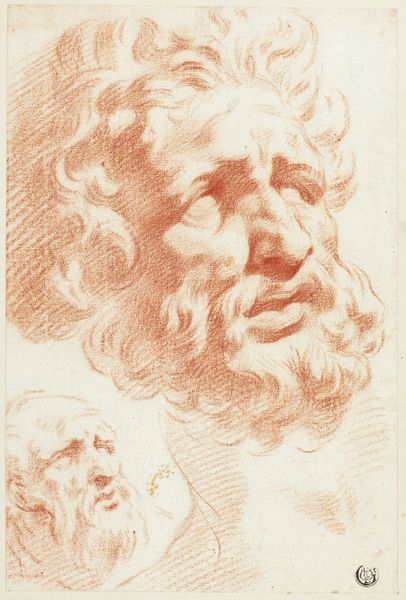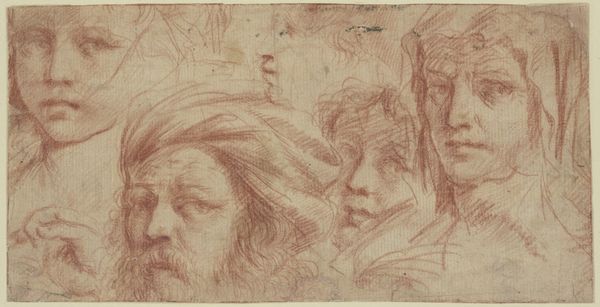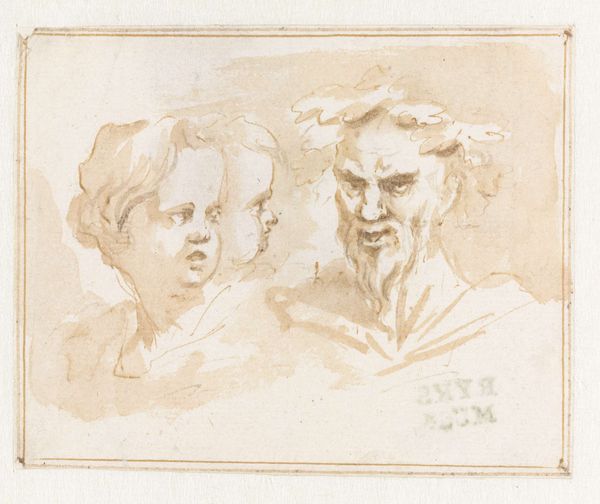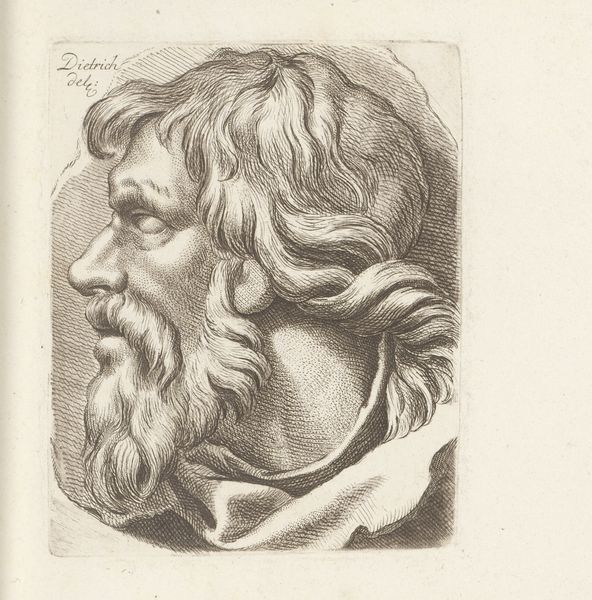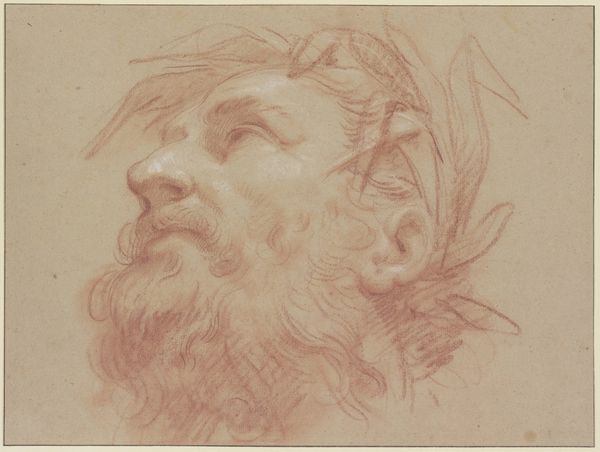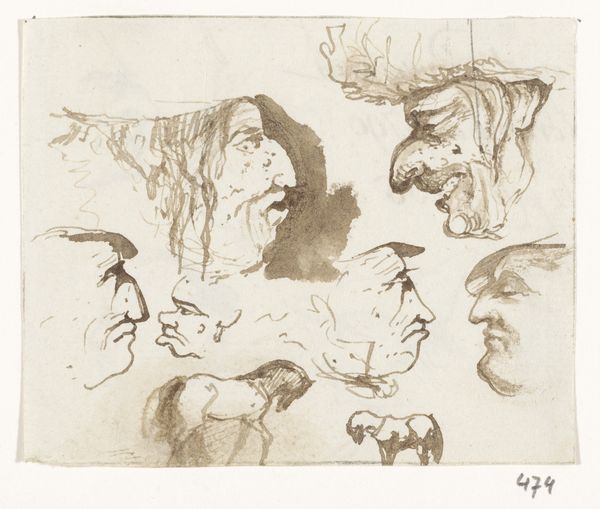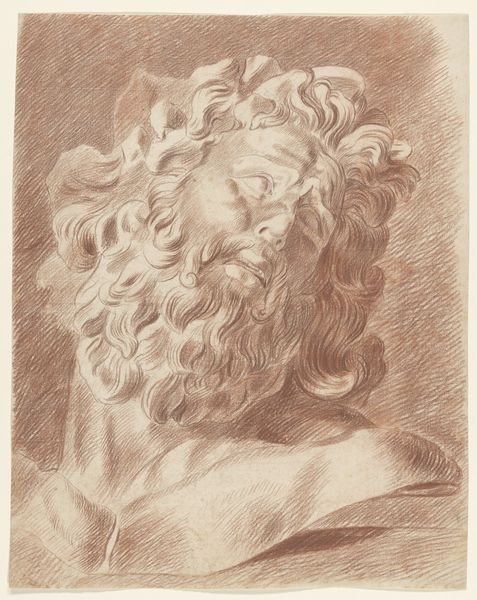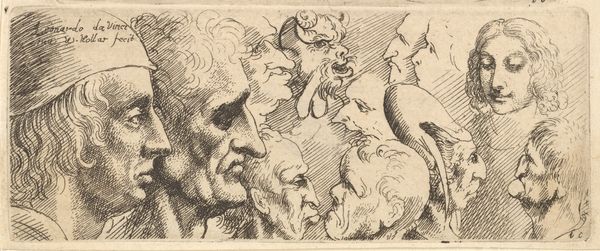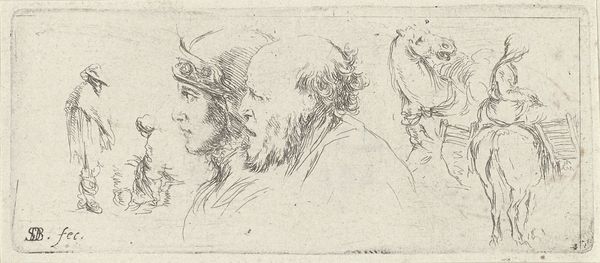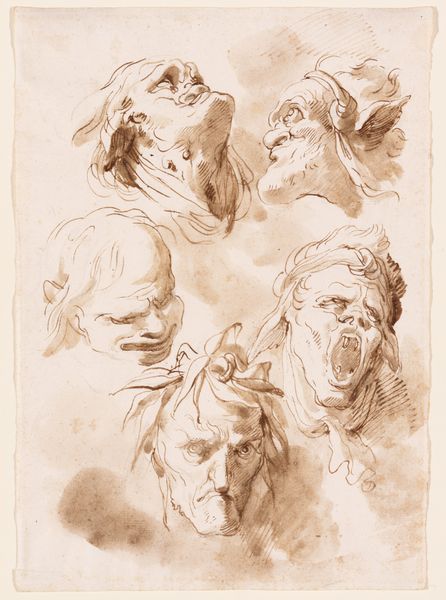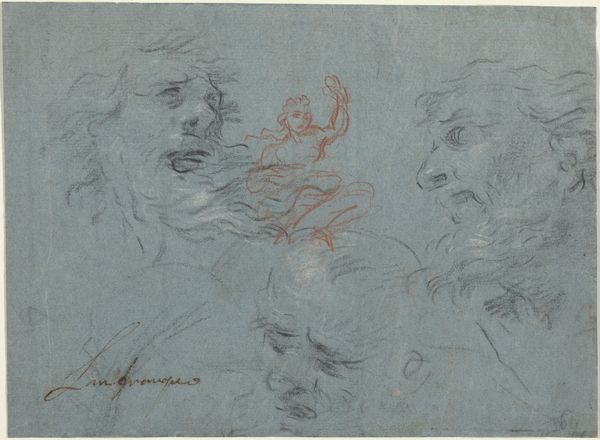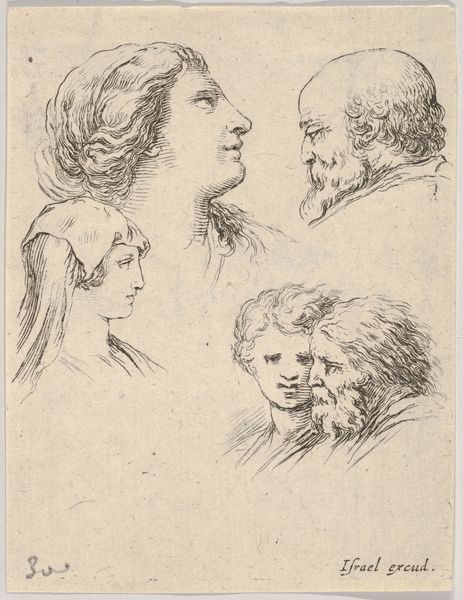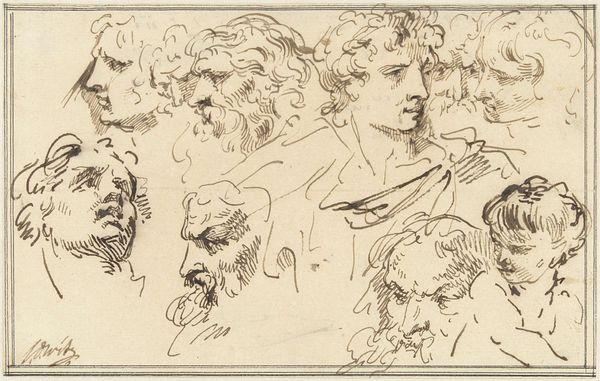
Laocoon. Two studies of Laocoon's face, one seem en face from below, and the other in profile to the left. 1628 - 1629
0:00
0:00
drawing, charcoal
#
portrait
#
drawing
#
baroque
#
figuration
#
portrait drawing
#
charcoal
#
history-painting
#
academic-art
Dimensions: 177 mm (height) x 276 mm (width) (bladmaal)
Editor: Here we have Willem Panneels's drawing from around 1628-1629, "Laocoon. Two studies of Laocoon's face," rendered in charcoal. I'm struck by the sheer physicality of these studies, how intensely the agony seems etched into the very material. What jumps out at you? Curator: Well, first, let’s consider charcoal itself. It’s a readily available material, literally the product of burnt wood. Inexpensive and accessible. That choice signals something crucial about the artistic process, doesn't it? Editor: How so? It was affordable? Curator: Precisely! It shifts our understanding. Panneels isn't using some rare pigment, but something commonplace transformed through labor. Think of the social context: Who had access to finer materials? Who was excluded? Panneels's choice democratizes, to an extent, the artistic process, focusing our attention on the hand that shapes the material rather than inherent preciousness. Why meticulously capture every furrow and expression in simple charcoal instead of oil paint? Editor: To emphasize the skill and study, maybe? He is studying a classical sculpture... Curator: Exactly. But more than just skill, it shows a dedication to the human form. It allows to scrutinize art production with emphasis on accessible medium for everyone. Even this ‘divine’ figure, Laocoon, is demystified through humble material, stripped down to study process itself and emphasizing that art can be born from such accessible origin. Editor: I hadn’t considered the implications of the material itself, only the form rendered. Curator: It changes how we see the drawing, doesn’t it? Considering the 'how' just as much as the 'what' and 'why.' Editor: Absolutely. Thanks. I'll keep this in mind for the rest of the tour!
Comments
No comments
Be the first to comment and join the conversation on the ultimate creative platform.
